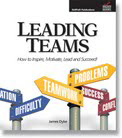RULE #3 – Express interest in team members’ success and personal well-being
Many leadership pundits emphasize the importance of making personal connections with one’s subordinates. Suggestions for doing so range from “be yourself” to “treat subordinates fairly” (we all know how easy that is!). Google puts it this way:
Get to know your employees as people, with lives outside of work.
Once again, the key question is: How do you do that? The straightforward answer is: Ask! Carve out times and occasions when you can have conversations with team members about who they are “as people, with lives outside of work.”
You can start doing this at the very beginning of a team member’s tenure—as part of the on-boarding process with new hires—by using a simple questionnaire you can have new team members complete. Include questions about their hobbies; special interests; birthdays; anniversaries; personal preferences of different sorts. Just don’t get too personal with the questions. And make it voluntary, so team members can feel free to leave some responses blank, or not even fill it out at all if they feel it’s too intrusive. Over the years, I collected various versions of this kind of survey from my management students, and so I created an example that can be used or edited to fit any team. You can access it here: Employee Information Survey.
Notice: There is an entire section in the survey devoted to personal motivational preferences—information that will help the boss to personalize recognition and reward. This is another way to build personal connections with team members.
Many leaders also include introductory moments at team meetings designed to focus on “lives outside of work.” I’m referring to discussion questions known as “ice breakers.” These questions encourage team members to express their personality or share interesting things about themselves. Here are some examples:
- When you were little, who was your favorite super hero and why?
- Who is your hero NOW and why? (e.g. a parent, a celebrity, a mentor)
- Tell us the story of your first car—what it was like; what you loved or hated about it.
- If you could visit any place in the world, where would you choose to go and why?
- What is one goal you’d like to accomplish during your lifetime?
One of the benefits of sharing this kind of information as a group is the bonding that takes place as team members begin to see what they have in common with one another (as opposed to focusing on their differences). This process also has the added potential of helping team members build trust with one another, as they get to know one another better and more personally. Patrick Lencioni (author of 5 Dysfunctions of a Team) encourages the use of these kinds of questions for team building and trust building. Of course, leaders can have similar conversations with team members in one-on-one interactions. But the benefit is multiplied when the whole team participates—including the leader!
Google has another suggestion for leaders along these lines:
Make new members of your team feel welcome and help ease their transition.
Don’t assume your team members will automatically do the hard work of adding new people to their already established circle of working relationships. So you have to take the lead in the important process of embracing newcomers. You must provide your team members with a positive model of acceptance and inclusion!
You can do this informally just by including new team members in the day-to-day work of the team: Encouraging their input in team meetings; inviting their ideas and suggestions; drawing out their perceptions as newcomers with “fresh eyes;” and recognizing their contributions publicly, with the rest of the team.
You can also create a more formal process for inducting new team members.
Up Close and Personal
One manager I know supervises a very dynamic, high-performing team. Under her leadership, they adopted a team pin that all the team members wear at work. It symbolizes their team and its cohesive culture. It’s in the shape of an electric guitar. I asked her what it meant. She looked at me and smiled and said simply, “We ROCK!”
Her team has a ritual for welcoming new members. The whole team participates by taking the new hire to lunch (the team picks up the tab for the newby). Everyone introduces themselves; they have a time of “ice breaking” where they all share a little bit about themselves personally; and they present the new member with the team pin. It might sound a little corny, but it has an immediate impact on the newcomer’s sense of connection and belonging. They instantly feel accepted; included; and valued.
Dynamic teams have many different kinds of rituals like this—for interaction; celebration; recognition; bonding; and even grieving. All of these kinds of practices reinforce team identity and membership in various ways, and repeat the vital message, “we’re all in this together.”
Much of our work consulting with teams and team leaders focuses on elements of team culture like these rituals and practices. If you would like more help with your own team leadership, we can share tools and techniques like these that will enable you to build a more cohesive and more effective team.
And if you would like to bring these resources and training to your team of managers and supervisors, give us a call—we’re here to help!
Until next time… Yours for better leaders and better organizations,
Dr. Jim Dyke – “The Boss Doctor” ™


